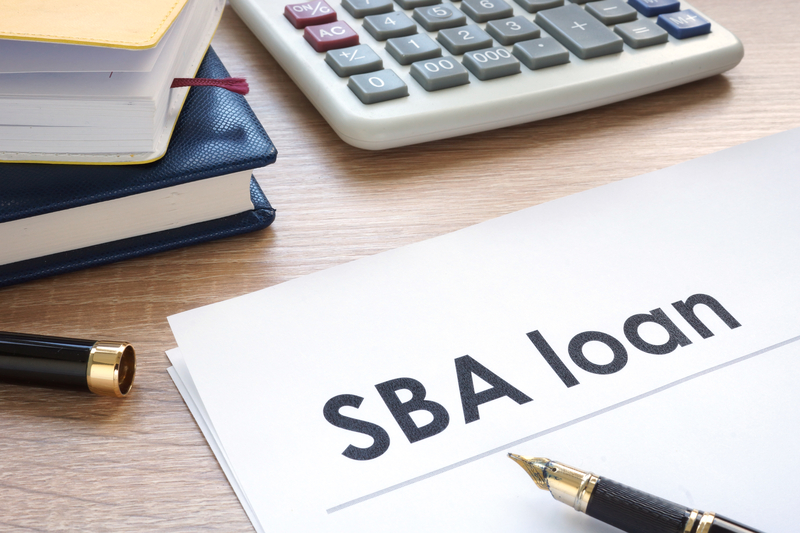When the time comes time to sell your business or when you are preparing to sell your business, it is important to have your company’s financial records and statements up to date and accurate. Your Business Broker will use your company’s tax returns and P&Ls to prepare the Market Value Analysis and the calculated value for your business will be based on these financial statements. Likewise, when you receive an offer for your business, the buyer will review your financial statements as part of their Due Diligence, and if SBA or other bank financing is being used the company financial statements will be reviewed during underwriting to determine the company value and loan approval.
Your company’s financial statements play a pivotal role in establishing the asking price for your business, Buyer Due Diligence, and lender approval. These financial statements can make the difference between a successful transaction (sale) and a lost opportunity.
Financial Statements Used for Business Valuation & Due Diligence:
Below is a list of Financial Statements commonly used for determining the market value of your business as well as the purchase price by the buyer and bank approval for financing.
- Tax Returns – last 3 years Federal (complete copy with all statements)
- Profit and Loss Statement – Last 3 years plus a year to date to the most recent month end.
- Balance Sheet – Last 3 years plus a year to date to the most recent month end (same month as P&L provided).
- Accounts Receivable – Same data as the P&L provided.
- Inventory – Current value.
- WIP Report – Used in Construction and Manufacturing businesses.
Business Valuations
Your Business Broker will prepare a Market Value Analysis and review it with you before listing your business for sale. This is of course a critical first step in the process of selling your business and establishes the asking (advertised) price for your business and lays the foundation for the selling price.
Business valuations use the last 3 years’ tax returns, year-to-date P&L for the current year plus a projection for the current year-end, and the balance sheet.
If there are significant discrepancies between the internal financial records and the tax returns it becomes difficult to rely on the current year-to-date P&L. This can make both valuation and the due diligence process difficult for both buyers and sellers.
Below is an explanation and use for each of the above financial statements and steps you as a seller can take to clean up and organize your company’s financial statements.
Tax Returns
The last 3 years of tax returns are the most important financial document used for determining the value of your business. Essentially, the company tax returns are the final score card for your business’s financial performance. It is important to note that the Net Profit shown on the tax returns is not directly used to calculate the business value, but it is a critical factor. Let’s look at how the company tax returns are used to calculate business value.
The primary driver for business value is earnings, specifically Discretionary Earnings (DE) and EBITDA. DE and EBITDA are calculated from the business tax return starting with the net profit and then “adding-back” owner’s salary, benefits, and personal expenses run through the business.
Most small and midsize business owners minimize the net profit on their business tax returns to reduce taxes, thus the Net Profit on the tax return is not meaningful by itself for business value purposes. This is why DE is used for valuation purposes as it includes the total economic benefit of owning the business.
A critical part of the DE calculation is determining the add-backs for owner’s expenses and benefits. In order to use an add-back it must be shown on the tax return as an expense. Expenses shown on the internal P&L but not shown on the tax return, cannot be used for valuation purposes. Add-backs also need to be well documented to clearly show they are an owner’s expense and not a business expense.
It is best to keep owner’s benefits in expense categories that are not easily confused with operating expenses and make sure to keep all owner’s benefits out of Cost of Goods Sold, materials, and inventory as banks will not consider add backs in these expense categories (too easily confused with operating expenses). Owner’s benefits are typically found in travel & entertainment, memberships, insurance, health insurance, auto & truck, bonuses, and retirement & 401K.
Also note that Distributions/Dividends are not an add-back because they are not an expense, they are a balance sheet transaction distributing profits to shareholders or members of the LLC.
Read more about Calculating DE and EBITDA
Cleaning Up the Profit and Loss (P&L) Statement
While the tax returns are the final scorecard for the company’s financial performance, the P&Ls are important for interim financial performance and providing details that may not be shown on the tax returns.
It is common for small and midsize business tax returns to be different from the internal P&L. CPAs often make adjustments and corrections on the tax returns without updating/correcting the internal P&L or providing the information for the owner or bookkeeper to reconcile the P&Ls to the tax return. While you own the business this is not very important, but when you go to sell your business, it makes it difficult to use the interim P&L for year to date figures because the accounting methods may be different.
A good first step is to ask your CPA to clean up the internal P&L to match the tax returns and advise you of any bookkeeping changes you need to change to better match the tax returns.
Next, check each account to ensure accuracy. Confirm that all entries are in the proper account and all transactions are accounted for. Performing a bank reconciliation of all business checking, savings and credit card statements will help you to have an accurate account of all Income and expense items. Doing a bank statement reconciliation monthly is a good practice and letting it go for serval months makes it a much more time consuming task.
All expenses that are run through the business and related to the Officer(s)/Seller(s) of the business need to have documentation such as Officer’s Auto, Cell phones Insurance expenses etc.
Balance Sheet
Balance Sheets are an important component of the overall picture of your business. The balance sheet contains all the company’s assets and liabilities at a given time. Internal Balance Sheets are often incorrect because they have not been updated to match the tax returns, depreciation, loans, and distributions.
On the asset side of the balance sheet the cash that the company has in checking and savings will be included as working capital. Other important balance sheet line items include equipment purchases and value including auto and truck purchases plus accumulated depreciation, A/R, and Inventory.
On the Liability side of the balance sheet all outstanding loans, credit card balances any tax or payroll liabilities plus Equity of paid in capital Distributions and Retained Earnings.
Your CPA will be able to assist you with cleaning up the balance sheet if the adjustments to depreciation for auto and equipment have not been kept up every year plus assist with any outstanding Shareholder loans shown on the balance sheet.
Accounts Receivable
A/R is an important part of the purchase agreement. SBA lenders will finance the purchase of A/R by the buyer as it provides working capital for the buyer. A/R must accurately reflect the due dates and amounts paid and owed on invoices.
A/R is generated at the time of invoicing a client and not part of the backlog of the business. All A/R that is billed and due at the time of closing belongs to the Seller and A/R billed after the sale of your business belongs to the buyer apart from WIP (Work in Progress) which will be prorated for materials and labor costs the seller paid up to the day of closing.
It is crucial to have an accurate A/R report at the time of closing to facilitate what is owed to the seller and what the buyer can expect to receive soon for cash flow purposes.
WIP (Work in Progress) Report
A WIP report is a report that provides an overview of ongoing projects, jobs, or production within a business. Most WIP reports include project/job names, contract amounts, estimated costs, labor and material costs to date, the percent of completion, billed revenue, earned revenue, and estimated completion time.
Other items on a WIP report can be backlog and remaining profit for each project.
When you want to sell your construction or manufacturing business this report will be an invaluable tool for prorating labor and materials at the time of closing plus instill confidence in both the buyer and SBA lender for the viability of the company.
Inventory
Normal operating inventory refers to the standard level of inventory that a business needs to maintain to support its ongoing operations. This includes the quantity of goods or materials on hand that are necessary to meet ongoing demand, fulfill orders, and keep the business running smoothly. The level of normal operating inventory can vary depending on factors such as industry norms, seasonal fluctuations, and production or sales forecasts.
For valuation purposes normal operating inventory is included in the value of the business which allows for higher multiples of earnings in industries that carry inventory.
“Excess inventory” refers to inventory levels that exceed what is needed to meet current demand or production requirements. Excess inventory may not enhance business value unless a buyer is willing to pay for it.
For valuation purposes inventory that has not been used in the past 12 months is considered obsolete inventory and does not add value to the business. Either write off or sell off obsolete inventory or be ready to offer a steep discount for obsolete inventory to the buyer.
It is important to update your inventory report and keep it current when you are ready to sell your business.
Located in Orange County, California, Pacific Business Sales is a fully licensed California Business Broker dedicated to helping you achieve the maximum value when selling your business. Whether you operate a manufacturing, construction, distribution, technology of service business in California, our knowledge, experience, and commitment will ensure that your goals are met. Trust Pacific Business Sale as your reliable business brokers.





